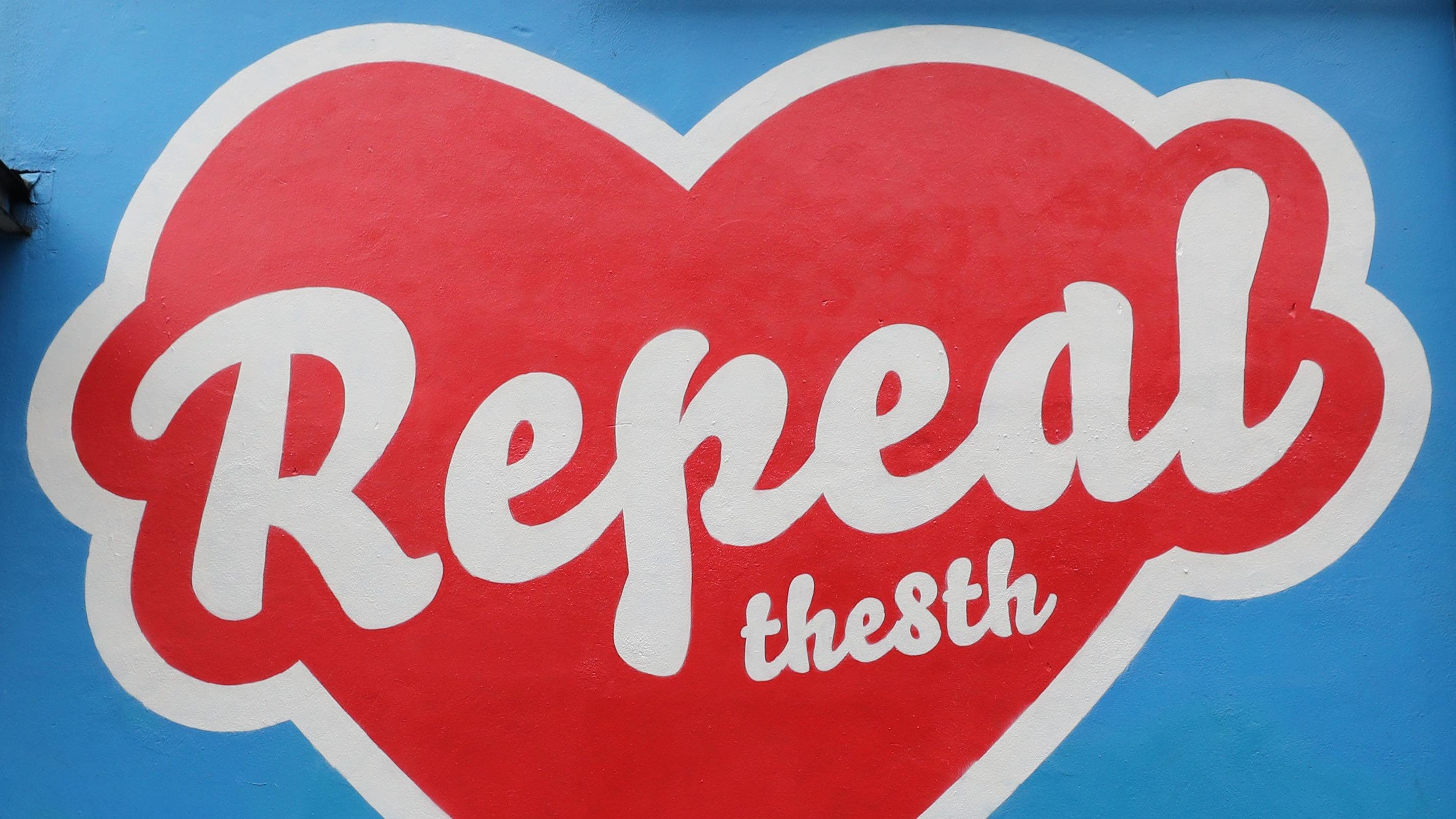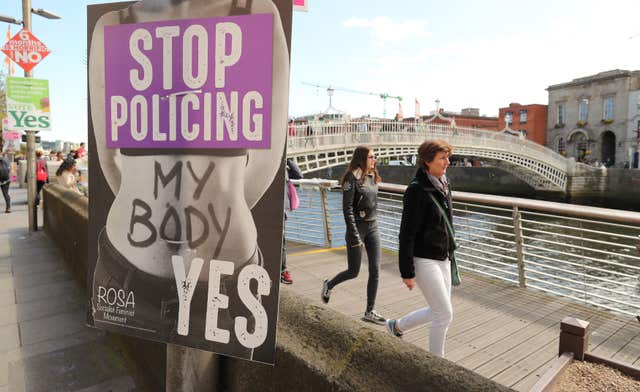
THE abortion referendum has split opinion across Ireland.
The topic is considered one of the most divisive and difficult subjects in public life, and has prompted posters with graphic post-abortion scenes on the streets of Dublin, erected by the No camp.
The Republic has one of the most restrictive abortion regimes in Europe, a legacy of the influence of the Catholic Church and a conservative attitude by generations past towards the matter.
While repealing the Eighth amendment of the constitution enshrining the equal right to life of mother and baby would not immediately introduce abortion, it would pave the way for the Government to do just that.
Well-organised campaigns have bombarded the airwaves and doorsteps and covered lampposts up and down the country with sharply-conflicting key messages.
Those in favour of a Yes vote include the leaders of the main political parties in Ireland – Taoiseach Leo Varadkar among them – some doctors, lawyers, women’s rights groups and campaigning organisations like Amnesty International.
The Government has characterised it as a modernising and compassionate reform, bringing Ireland into step with its neighbours who all have more liberal regimes.
Although there have been several referendums concerning abortion, nobody aged under 52 has had the chance to vote on an Eighth amendment introduced in 1983, and backers hope a large number of young people will vote and turn the tide their way.
They argue that that abortion is happening anyway, three illegal terminations are carried out every day using pills obtained on the internet – and thousands of pregnant women travel to the UK.
Mr Varadkar and his supporters in Government have said it is better to regulate the procedure within the Irish health service rather than outsource it to Britain, exposing women to the dangers and inconvenience of travel, or taking a pill of uncertain origin themselves without the benefit of a doctor’s advice.
Together For Yes, the umbrella group leading the campaign for an affirmative vote, has used the slogan “trust women” to argue that they should be allowed to make important decisions about their own lives and families.
Those opposed to change include the clergy, a sizeable proportion of politicians and civil society organisations.
The Catholic Church believes the life of the unborn is sacrosanct, that it would be immoral to allow its termination through abortion, but advocates greater support for those in crisis.
What is the Eighth Amendment?
It is a clause in the constitution which was written after a previous referendum on the issue in 1983 recognised the right to life of the unborn child.
It protects the equal right to life of the mother and the unborn and effectively prohibits abortion in most cases.
Among its supporters are the Catholic church, which remains a strong presence in Ireland, though diminished from its heyday. Young people are among the most enthusiastic proponents of repeal.
What effect has it had?
In 1992, women were officially given the right to travel abroad, mostly to the UK, to obtain terminations. Pro-repeal campaigners said almost 170,000 have done so.
The Irish Government’s deputy premier, Tanaiste Simon Coveney, has argued that effectively left Britain deciding the law for Irish women around the procedure and it was time to take back control in Ireland.
What about the women who stay in Ireland?
The campaign to liberalise abortion gathered momentum after an Indian dentist, Savita Halappanavar, died in hospital in Galway aged 31 when she was refused an abortion during a miscarriage.
Her husband, Praveen Halappanavar, said she repeatedly asked for a termination but was refused because there was a foetal heartbeat.
Health service reviewers later identified failings in her care.
Did anything change?
In 2013, legislation was amended to allow terminations under certain tightly restricted circumstances – the Protection of Life During Pregnancy Act.
When doctors felt a woman’s life was at risk due to complications from the pregnancy, or from suicide, they were permitted to carry out an abortion.
It followed a 1992 Supreme Court ruling that terminations were permitted where the mother’s life was at risk.
That regime has prompted uncertainty, proponents of repeal said, with the medical profession facing possible prosecution and up to 14 years’ imprisonment if they wrongfully carry out an abortion.
Was that concession enough for those seeking liberalisation?
Not according to the women who were still travelling to the UK in their droves for procedures.
Among them were Amanda Mellet and her husband James, who took their case to the UN’s Human Rights Committee.
The Committee called for reform to give women greater rights and said the ban on abortion caused cruel, inhuman or degrading treatment.
In 2016, for the first time in its history, the Irish State compensated a woman, Mrs Mellet, for the trauma caused by forcing her to travel to Britain for an abortion.
What approach did the Government adopt?
It established a public advisory body, a Citizen’s Assembly, which recommended introduction of unrestricted access to abortion.
Because of the Eighth Amendment, a public poll was needed before new laws could be passed, and earlier this year the country’s Housing Minister, Eoghan Murphy, set the date for the abortion referendum as Friday May 25.
The Government has published draft legislation to be introduced if the amendment is repealed which would allow relatively free abortions, subject to consultation with a medical professional and after a short waiting period, up to 12 weeks after gestation and up to 24 weeks with restrictions.
If, after 12 weeks, a woman’s life is threatened or there could be serious harm to her health two doctors will consider whether to allow the procedure.
Terminations will not be carried out after the foetus becomes viable, following 24 weeks of pregnanc

Enjoy the convenience of having The Sunday Post delivered as a digital ePaper straight to your smartphone, tablet or computer.
Subscribe for only £5.49 a month and enjoy all the benefits of the printed paper as a digital replica.
Subscribe